
The campus of the University of Tulsa in Tulsa, Oklahoma. [Source: publicradiooftulsa.org] 
Brad Carson, when Under Secretary of the Army, visits army intelligence center at Fort Huachaca in southeast Arizona near the Mexican border in 2015. [Source: army/mil]
Exemplifies Growth of Military-Industrial-Academic Complex That Is Destroying U.S. Democracy
The University of Tulsa (TU) is one of Oklahoma’s premier schools. It draws students from around the world; has a billion-dollar endowment; and boasts everything from a vast collection of modernist literature to top-tier petroleum engineering and cybersecurity programs.
That’s the school’s appealing, public face. But it has a darker side: a history linked to Indigenous displacement and genocide; stifled dissent; and submission to corporate and military power.
TU thus furthers U.S. imperial aims, whether by upgrading planes for the Air Force, goading students to develop more advanced drone technology, or partnering with defense contractors to enhance Pentagon ventures overseas. Whatever the intentions driving these programs, they result in mass suffering and death.
The school has redoubled its commitment to this work in recent years. Two years ago, a local oil and banking billionaire, George Kaiser, effectively took control of the institution, gutting the humanities to devote more resources to engineering, cybersecurity, and other “hard” disciplines.
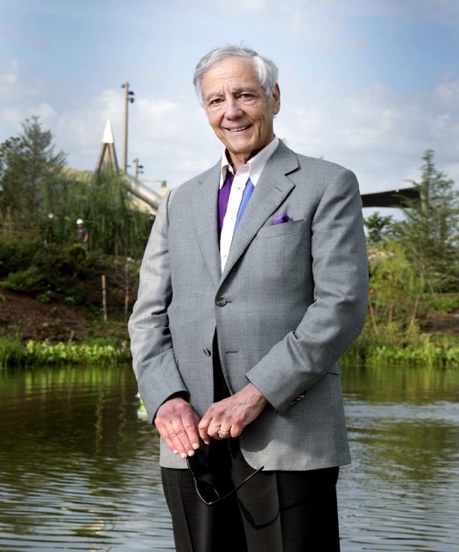
And on July 1, Brad Carson—a hawkish former congressman and Department of Defense (DoD) functionary—became TU’s president.
For anyone concerned with the trauma and devastation U.S. military campaigns bring to foreign countries—or with the idea of the university as a place of unrestricted intellectual exploration—these developments can only be met with alarm.
The History of TU
The school’s origins, like those of many U.S. institutions, lie in Indigenous displacement and genocide. Guy William Lodgson, in his history of the university, traces its origins to the Presbyterian School for Indian Girls, founded in Muskogee, Indian Territory, in 1882.
An early director, Alice Robertson, considered it her personal mission to “civilize” her pupils through “Christian education.”[1]

Alice Robertson [Source: orgs.utulsa.edu] 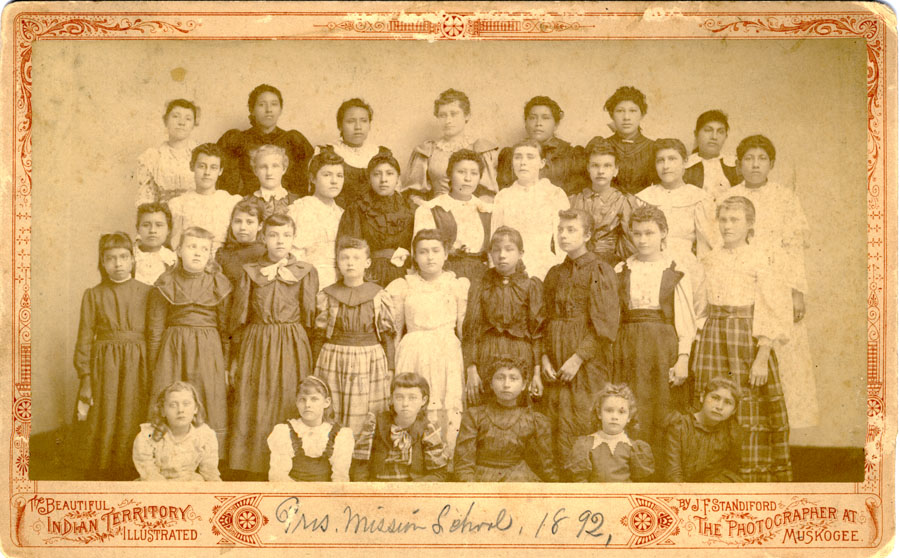
Presbyterian Mission School 1888. [Source: orgs.utulsa.edu]
Over the following century, as the missionary project became a university, TU established itself as a friend to military and industrial interests. “Military use of the school started as early as 1940,” Lodgson writes of the World War II era, “when short courses in engineering were offered to help meet the growing demands of industry and government.”
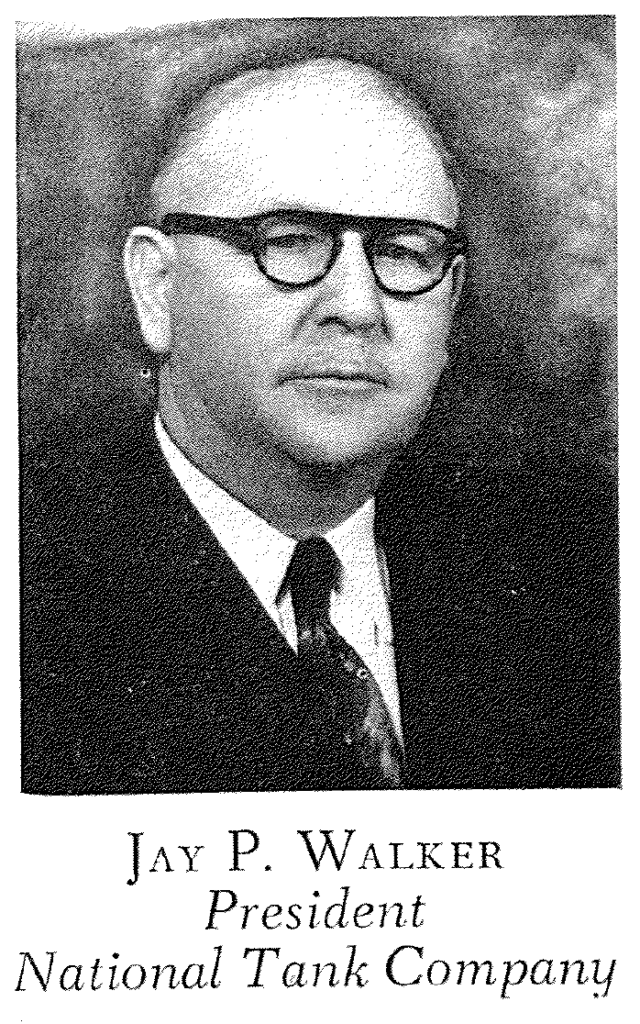
In 1952, the school tapped “Jay P. Walker, founder and president of the National Tank Company”—a firm serving oil and gas interests—for its board of trustees. And it accepted gifts, ranging from furniture to entire buildings, from the oil firm Stanolind, the Tulsa-based subsidiary of Standard Oil of Indiana and hydraulic fracturing (“fracking”) pioneer.[2]
Lodgson has far less to say about the mid-20th century’s major political struggles. He notes, for example, that “the civil-rights movement attracted some student support, but the Tulsa campus was less active than others.” Vietnam, likewise, drew “little attention or concern.” Efforts to establish a Students for a Democratic Society chapter in 1965 “never received much support,” and TU’s “campus was quiet in comparison with that of other schools.”[3]

But the post-war era witnessed another shift—one that would ultimately transform TU, as it did many other universities, into a recipient of millions in taxpayer dollars, justified by the constant invocation of security threats.
As World War II ended, U.S. policymakers felt that the economy needed “massive state intervention” to avoid another depression. But because the country’s “entire ideological history” went against any “major overt state role in the economy,”[4] the Pentagon system emerged as—in Noam Chomsky’s phrase—“the cover for U.S. industrial policy.”[5] By citing security concerns, Washington officials could divert taxes to the defense sector, which used the funds as a guaranteed stipend for high-technology research.
This permanent war economy produced “an unprecedented and explosive expansion of the academy,” one “making entrepreneurial professors the conduits through which extraordinary sums of public money have flowed into the universities.”[6] TU was no exception to this trend. Its military connections have deepened in recent decades, as the school supports military service branches like the Air Force, and teams with top defense contractors like Raytheon and Northrop Grumman.
CASI: Maintaining the KC-135 Supertanker
Consider first its work with the Air Force.
TU played a key role, as the new millennium dawned, supporting Oklahoma’s Center for Aircraft and Systems/Support Infrastructure (CASI)—though its specific contributions remain a subject for future research, given CASI participants’ refusal to discuss the program.
Jim Sorem, Dean of TU’s College of Engineering and Natural Sciences and CASI’s current director; Thomas L. Landers, Dean of the University of Oklahoma’s Gallogly College of Engineering and CASI’s director from 1999 to 2001; and Tinker Air Force Base, where CASI’s work occurs, all failed to respond to email requests for information on TU’s role in the initiative.

Jim Sorem [Source: tucore.utulsa.edu] 
Thomas Landers [Source: ou.edu]
The Center’s members include academic researchers, state government officials, and “industry-military aerospace sector” representatives. And its mission, former director Edward T. Knobbe explained, is to support “the Defense Department’s capital-intensive aircraft inventories.” This means, more specifically, the KC-135 supertanker and the B-1 bomber.
The former debuted at a Renton, Washington, Boeing facility in 1956, and is essentially a flying gas station: It can transfer fuel, while airborne, to other in-flight planes. And it “has served in every major conflict and many other missions around the world” over the last 65 years.
For example, during the Cold War, the KC-135 factored into Washington’s plans to send B-52 bombers “over the North Pole to strike the Soviet Union.” Because the bombers “couldn’t carry enough fuel for a round-trip mission,” the KC-135 was crucial to their successful return.
The supertankers later helped the U.S. bomb Vietnam, where they “made 813,000 aerial refuelings of combat aircraft,” and Iraq, where they transferred hundreds of millions of pounds of fuel, and flew thousands of sorties, in the Gulf War.

But the KC-135 was becoming less dependable in that era. The planes “began to blow up in mid-flight” in the 1980s, and more generally started showing signs of age. Regular upkeep thus became critical to their ongoing use, and Tinker Air Force Base, in Oklahoma City, became the main site for KC-135 maintenance.
The KC-135 in Action: Afghanistan and Iraq
This regular service work—supported by CASI and TU—permitted the aircraft to participate in President George W. Bush’s 2001 bombing of Afghanistan. The aircraft flew “more than 5,000 sorties” there between October 2001 and February 2002, servicing the full range of bombers attacking the country. “You name it; we refuel it,” Maj. Mark Ustaszewski explained.
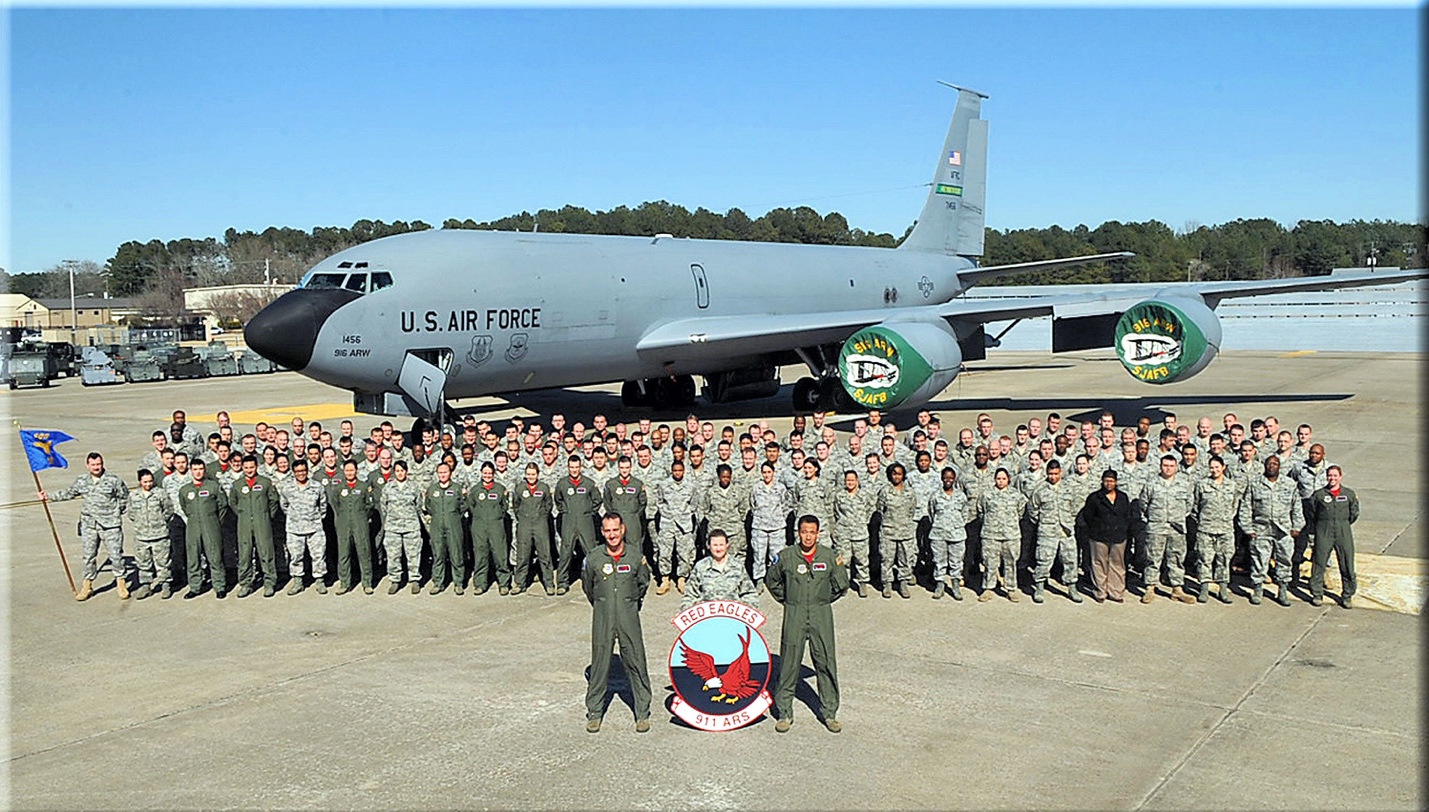
KC-135s later facilitated Washington’s “shock and awe” assault on Iraq in 2003. On the campaign’s first mission, the supertankers “refueled two F-117 Nighthawks,” for example. KC-135s flew more than 6,000 sorties “during the main phase of Iraqi Freedom,” unloading “376,391,000 pounds of fuel”—and, more generally, playing an “absolutely crucial” role in Washington’s relentless bombing.
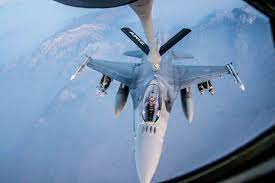
CASI: Maintaining the B-1 Bomber
Turn now to the B-1 bomber, which TU also maintained through its membership in CASI. The aircraft dates to 1974, the year “the first prototype was rolled out”—and when “antiwar protesters tried to throw themselves under [its] wheels” to halt production. President Jimmy Carter did cancel the plane, but President Ronald Reagan revived it. Still, the B-1 only “saw its first combat during Operation Desert Fox in 1998,” when it bombed Iraq; it bombed Kosovo the following year.

But these initial missions coincided with high-level skepticism, in Washington, about the aircraft’s ongoing viability. These doubts persisted even amid efforts to modify the plane after the Cold War: first, “from a Soviet-airspace-penetrating nuclear strike plane to a conventional bomber meant to pound the infrastructure and massed formations of an enemy army”; later, after 9/11, to “a close air support plane,” backing up ground troops with firepower from above.
CASI’s specific task, with the B-1, was to maintain its Pitot-Static Probe Interface, used “to measure the aircraft’s speed, Mach number, and altitude.” With TU’s support, the Center improved the plane’s “capacity to generate … bombing missions,” reducing its “turnaround cycle by a factor of 7 to 1, from 2 weeks to 2 days.”
The B-1 in Action: Afghanistan and Iraq
Because of TU’s upgrade work, the B-1 was able to strike Afghanistan with unprecedented ferocity in October 2001. The bombers “dropped fifty CBU-87s”—a type of cluster bomb, with each “containing 10,100 bomblets”—in just the first week.
B-1s proceeded to fly “about four sorties a day” as the assault continued. They dropped hundreds of guided missiles—and, more broadly, the “majority of the tonnage”—on Afghanis in the process. The aircraft, one policy analyst remarked, “ha[d] finally found an adversary it can compete with. A country that is totally defenseless.”
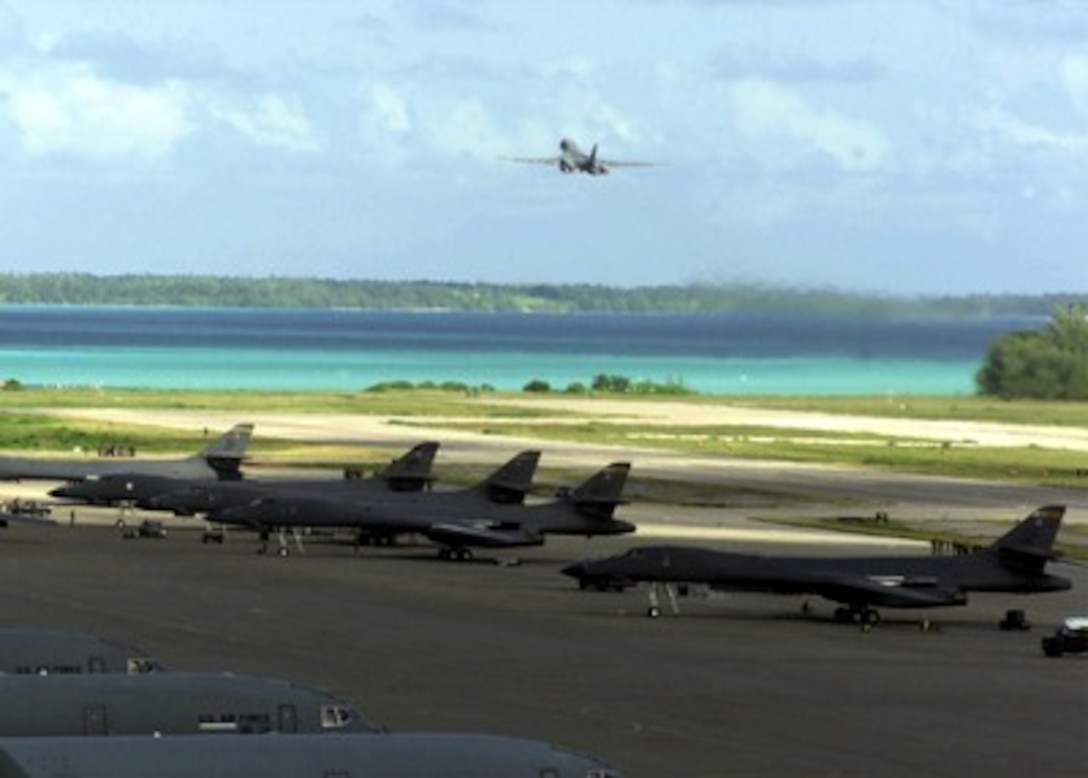
In 2003, the B-1 “kicked off the air war” in Iraq, unleashing “a string of bombs meant to kill Saddam Hussein in one of his Baghdad palaces (he wasn’t there).” In the ensuing weeks, “the constant presence of B-1s armed with 48,000 pounds of guided weapons created a ‘suffocating presence’ over Iraq,” in Col. James M. Kowalski’s phrase.
This presence, in both Afghanistan and Iraq, ultimately killed thousands of civilians—a fact CASI’s directors never acknowledged, while praising TU researchers’ technical feats.
Afghanistan and Iraq: The Victims
On October 21, 2001, U.S. jets struck a remote Afghan village, Thori, in the Urozgan province near a Taliban military base. The attack killed “at least twenty-three civilians,” most “of them young children.”
The following night, as many as 35 people “died when U.S. bombs and gunfire hit their village, Chowkar-Karez.” One 20-year-old woman, Mushfeqa, had fled there from Kandahar with her family when Washington began bombing that city. But there was no refuge. She witnessed the shooting of her mother and brother, the death of her uncle in a bomb blast.
Afghan deaths totaled, in the end, somewhere between 1,000 and 4,000 in those final months of 2001. This wide discrepancy stems directly from Washington’s refusal to “do body counts”—in the same way a pedestrian, on an evening walk, refuses to reckon the number of ants crushed underfoot.
Consider Iraq next, where “more than 6,700 [civilians] were killed in just 3 weeks of ‘Shock and Awe,’” from March 20 to April 9, 2003. In the very first strike—the effort, involving B-1 bombers, to take out Saddam that was mentioned above—U.S. forces murdered 15 civilians “because of faulty intelligence.” Weeks later, on April 5, Washington bombed “a residential area in downtown Basra,” killing 17 civilians, ranging in age from 19 months to 68 years.

Cleanup from U.S. bombing of a wedding party in Afghanistan in 2008. [Source: apjjf.org] 
Iraqi troops advance through area levelled by U.S. bombs. [Source: theatlantic.com]
TU and Drone Research
Only part of the nightmare visited on Iraq and Afghanistan came from manned aircraft. Those two countries, among others in the region—and other regions on the globe—were also major fronts in the drone war, another campaign TU researchers work to support, and one responsible for thousands of deaths and unspeakable mental trauma. To these ends, the school’s Department of Electrical and Computer Engineering hosted the first Green Country Unmanned Aircraft System Competition in August 2017.

One of the event’s main participants was CymSTAR, which provided judges for the contest. Founded in 2003 and based just east of Tulsa, in Broken Arrow, the company “develops and upgrades flight simulators for military aircraft such as the KC 135”—the same supertanker discussed above.
TU and Raytheon
TU also hosts contests to train young cyber-warriors, who sharpen their skills in the Raytheon-sponsored National Collegiate Cyber Defense Competition. For this event, students “compete to show who can best protect a computer network against real-world cyber-attacks.”
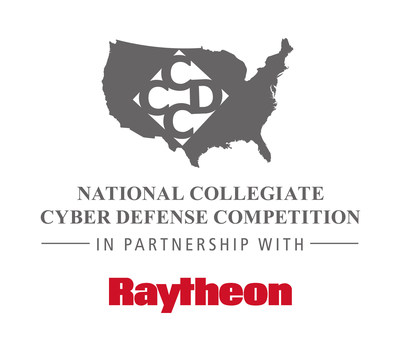
Raytheon is a major weapons maker and defense contractor. Just since January, when General Lloyd Austin—a former Raytheon board member—became U.S. Defense Secretary, the firm has raked in over $10 billion in contracts, propelling the company to #2 on the list of top national defense contractors.
Raytheon dates to 1922, when MIT electrical engineer Vannevar Bush founded the American Appliance Company. That entity, a few years later, became the Raytheon Manufacturing Company, which supported U.S. war-making overseas in the following decades. Its “navigational radars guid[ed] B-52 bombers” as they brought holocausts to Vietnam, Laos and Cambodia during the Cold War.
TU, Cyber-Security and Team8
TU’s Tandy School of Computer Science wins praise from the National Security Agency (NSA). Its website proclaims that it “produces many of the nation’s top experts in cyber operations, cyber defense and research,” boasting that students go on to staff the Defense and Energy Departments and the NSA.
In March 2019, the university launched its annual Tulsa Cyber Summit, co-sponsored by the George Kaiser Family Foundation (GKFF) and Phillips 66, and featuring former CIA director John Brennan as a keynote speaker. Brennan boasts an impressive résumé: He coordinated the CIA’s murderous drone program; headed the Agency’s station in oppressive Saudi Arabia; and was a key originator of the Russia-Gate conspiracy theory.
That year’s Cyber Summit also featured Nadav Zafrir, founder and CEO of Team8, an Israeli cyber-technology firm backed by Walmart, Microsoft, Barclays, and other corporate giants. Zafrir’s appearance presaged the launch of the TU-Team8 Cyber Fellows partnership. This initiative, funded by GKFF, is “for doctoral students in the College of Engineering and Natural Sciences,” and “designed for students seeking to advance cyber R&D across security, big data and artificial intelligence.”
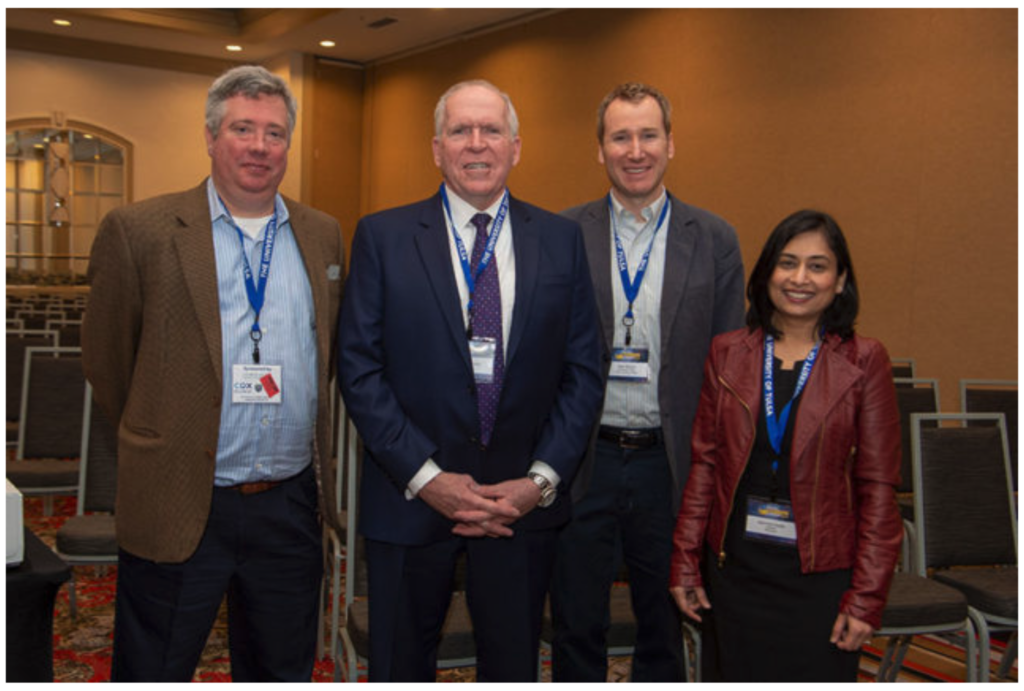
Like the other collaborations discussed throughout this article, this partnership further ensnares the university in U.S. militarist networks. For example, Team8 named Admiral Mike Rogers, once the concurrent NSA Director and Commander of the U.S. Cyber Command, a senior adviser in 2018. Rogers spoke at the Virtual Tulsa Cyber Summit earlier this year.
Rogers is a natural fit for Team8. Its origins lie in Israel’s answer to the NSA: Unit 8200, which Zafrir ran from 2009 to 2013. One former Unit 8200 member described their work as “non-stop monitoring” of Palestinians, who had “no way of knowing” they were being watched, and zero legal protection. “The notion of rights for Palestinians does not exist at all,” they argued. “Not even as an idea to be disregarded.”


Nadav Zafrir [Source: crunchbase.com] 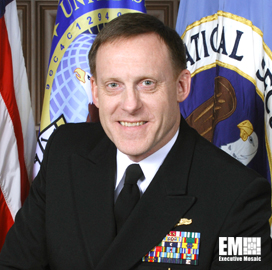
Admiral Mike Rogers [Source: blog.executivebiz.com]
TU and Northrop Grumman: Solar Power
TU has also teamed with Northrop Grumman (NG), another of the world’s largest arms manufacturers and defense contractors, on several projects. Much like Raytheon, NG has developed technology the U.S. military uses to kill civilians—in this case, bombers striking Afghanistan, Iraq, and Libya, to name some of the victims’ homelands. And its facilities—a Long Island plant, most notoriously—have a miserable environmental record.
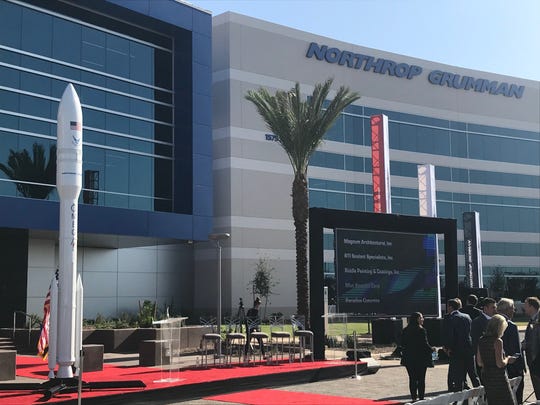
Bear this record in mind when considering the $1.7 million NG gave TU from 2014-2017. The funds are for researching a “hybrid solar conversion system [that] will provide both electricity and heat to dispatch solar energy whether or not the sun is shining.”
The project might sound innocuous. But it needs to be understood in the context of U.S. military objectives. A key DoD goal is “to convert its fuel-hungry operations to renewable power.” That aim has “nothing to do with the white-hot debate over climate change,” and everything to do with facilitating Pentagon campaigns abroad: “Mobile solar-power units allow soldiers to prowl silently through enemy territory.”
TU, Northrop Grumman, and George Kaiser: Hydraulic Fracturing
TU has also investigated, for NG, “synthetic drill fluids” and the “transport of fluids in horizontal and inclined wellbores.” This work advances energy company interests: “horizontal drilling can provide a substantial economic gain” for these firms, by creating hydraulic fractures—better known as “fracking”—that open “a ‘super highway’ for reservoir fluids.”
The university’s new controller, Tulsa oil and banking billionaire George Kaiser, has a direct stake in fracking profits. His firm, the Kaiser-Francis Oil Company, has owned wells in boom sites like North Dakota, “southeastern New Mexico and southwestern Texas,” and Illinois—where one of his representatives tried to persuade the Effingham County Board that fracking is safe for groundwater.
That assurance was—to be polite—dubious. In 2016, for example, Stanford scientists concluded that fracking, through a range of “unsafe practices,” had a “clear impact to underground sources of drinking water.” Columbia University researchers concurred, pointing to “eventual water-quality problems” that could result from fracking.
A 2019 study in the Oxford Research Encyclopedia of Global Public Health pointed to the “chemical hazards” fracking poses to groundwater sources. And Physicians for Social Responsibility recently obtained records showing that the EPA, “despite [its] own grave concerns,” approved toxic PFAS—known as “forever chemicals”—for use in fracking. These compounds “contaminate the drinking water of as many as 80 million Americans,” the New York Times reported.[7]

Kaiser’s TU Takeover
Kaiser recently completed what Jacob Howland, a former TU philosophy professor, termed “a hostile takeover” of the university. His overhaul “eliminated all academic departments” and “gutted the liberal arts,” making the school, as its new mission statement put it, “STEM-heavy with a professional, practical focus.”
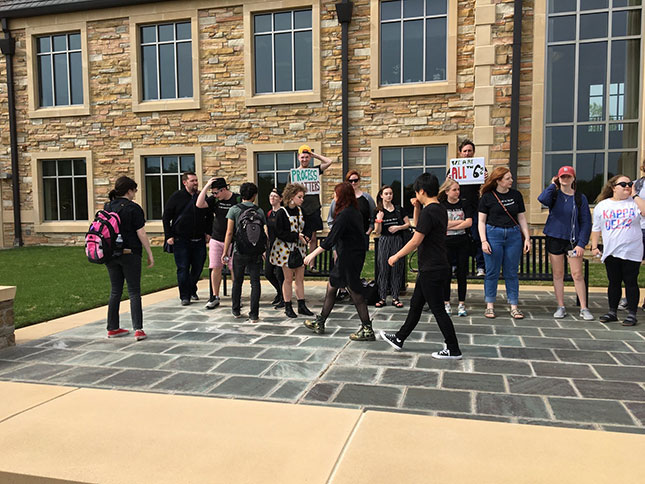
Kaiser has been promoting this vision since he was chairman of the Oklahoma State Regents for Education in 1989. At that time, he argued that unpopular university programs should be slashed, and that students should “pay more to take courses that are not part of their degree programs.” There is nothing “practical,” in this view, about intellectual exploration.
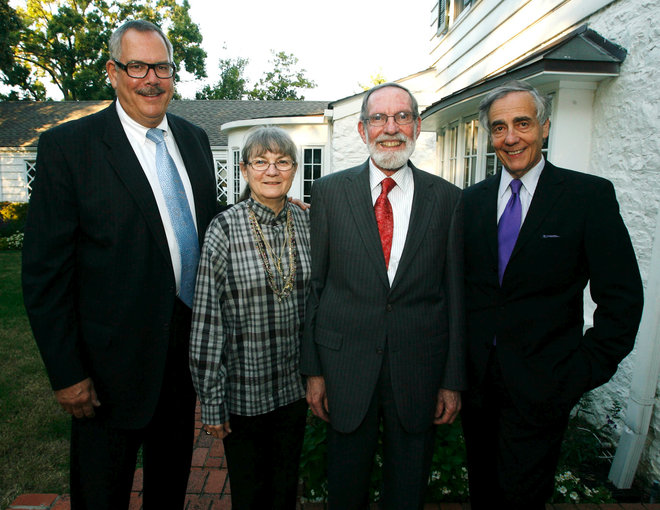
The George Kaiser Family Foundation (GKFF)
TU’s restructuring, according to Howland, puts the school under the George Kaiser Family Foundation’s (GKFF) control. This entity, through its support for early childhood education, and for Tulsa’s Woody Guthrie Center and Gathering Place—an enormous new park, and USA Today’s Best New Attraction in 2018—burnishes its namesake’s reputation.
It thus performs the same function as the Rockefeller Foundation, or the various museums and art spaces bearing the Sackler family name: We think of these organizations and buildings before we think of the 1914 Ludlow Massacre at a Rockefeller-owned mine, or of the Sackler family’s role in hundreds of thousands of opioid overdoses.
But Kaiser also uses his foundation “to advance his personal financial interests.” For example, a GKFF subsidiary, Maya Maritime N.V., owns the $110 million Excellence, a liquefied natural gas supertanker. And another subsidiary, Excelsior B.V.B.A., owns a different gas carrier, the Excelsior. Overall, in 2010, “1.25 billion of the charity’s $3.4 billion in assets [was] invested in ways that benefit[ed] Kaiser’s for-profit endeavors.”
Kaiser vs. His Financial Responsibilities
By parking billions of dollars in the Foundation, Kaiser can take advantage of a range of tax deductions—the latest in a decades-long quest to dodge the IRS. As he rocketed onto the Forbes 400 list in the late ’90s, for example, he “reported taxable income to the Internal Revenue Service just once, totaling $11,699—equivalent to a full-time hourly wage of $5.62.”
Legal records suggest Kaiser has also cheated his fellow Oklahomans. Lawsuits filed against his Kaiser-Francis firm over the years sound a consistent note: “underpayment of royalties” or breach of “fiduciary duties.”
Richard Allen—a Chickasha, Oklahoma, attorney who represented some royalty owners in the 1998 Mayo v. Kaiser-Francis case—explained that he had “been around the oil and gas business for about twenty years,” but had “never heard of anything like” Kaiser’s operation. The firm “owns a few buildings up in Tulsa and you walk in and there’s 500 different corporations in those buildings”—“all of them owned by Kaiser and his family,” all of them “selling to themselves.” Kaiser’s message, to Allen, was clear: “We can get around the law and do this.”

Kaiser’s Interests Overseas
Kaiser’s foreign investments further undermine his reputation for benevolence. GKFF invested in Pátria Investimentos, for example, the firm behind “the construction of a controversial shipping terminal in the [north Brazilian] state of Pará,” a means of linking the Amazon to major ports on the Atlantic coast. This construction spurred “aggressive deforestation of the Amazon for the expansion of agribusiness.” And Pátria itself was a firm backer of Jair Bolsonaro, Brasilia’s answer to Donald Trump.
Or consider GKFF Ventures—yet another subsidiary—which invests in India’s GMR Group, a construction firm. One of its flagship building projects was the Hyderabad International Airport, which displaced some 650 families from four different villages. Published accounts describe the “agony” of the uprooted as “unimaginable”: “several elderly people passed away with cardiac arrests as they lost everything”; others committed suicide.
Kaiser’s Cyber Vision
One of Kaiser’s chief goals for TU, and for Tulsa more broadly, is to transform it into a major cyber hub. This plan will extend a trend that has already been under way at TU for several decades, and build on the partnerships with Raytheon and Team8 described above.

In 1996, the Pentagon “hired some University of Tulsa student researchers to be a sort of Interpol of the Internet.” Four years later, the NSA “designated the school as an NSA Center of Excellence in Information Assurance,” and tens of millions of research dollars poured in.
More recently, in 2012, the NSA and U.S. Cyber Command named TU “a National Center of Academic Excellence in Cyber Operations,” following other “nods of approval” from the DoD and U.S. Secret Service, which has a facility on campus. And just last November, the Department of Homeland Security backed the school’s efforts “to build up the nation’s cyber workforce.”
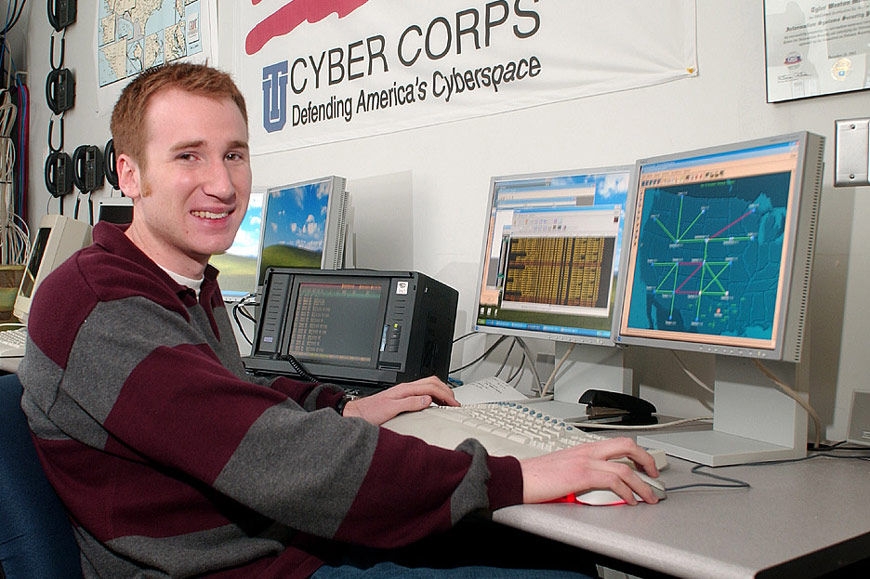
These efforts are directly in line with Washington’s current industrial policy. Consider the 2019 Federal Cybersecurity Research and Development Strategic Plan. Written “under the leadership of the White House Office of Science and Technology Policy,” the document recognizes the threat of cyber-attacks on the private sector, which owns most of the U.S. cyber infrastructure.
And it outlines a far-reaching response. Specifically, it pushes for “an education and training ecosystem that supports the application of ‘systems security engineering’ capabilities at all proficiency levels,” whether in a K-12 school or at a university research facility.
At all of these places, the priority is the same: “Align education and training with the cybersecurity workforce needs of employers and prepare individuals for lifelong careers.” As was the case in the Industrial Revolution, humans must be adapted to the economic system—not the other way around.
Kaiser’s Attorneys: Reinforcing TU’s Military Ties
To promote his interests and burnish his image, Kaiser relies on a crack team of attorneys—a group that further links him to the U.S. military-security establishment. His foundation’s executive director is Ken Levit, who earned his law degree from Yale, and served as CIA Director George Tenet’s Special Counsel from 1998 to 2000.
Human Rights Watch (HRW) discussed Tenet at length in its 2005 report on torture at U.S. detention facilities around the globe. “Under George Tenet’s direction, and reportedly with his specific authorization, the CIA is said to have tortured detainees using waterboarding and by withholding medicine”—one reason why “a criminal investigation is warranted,” HRW concluded. The European Center for Constitutional and Human Rights agreed, submitting a criminal complaint against Levit’s former boss.
Levit himself, in an academic article on the CIA and torture, explicitly disavowed the practice. But he proceeded to explain that “on-the-ground scenarios” raise the question: “When can [an interrogator] use deception, discomfort, fear, fatigue, punishment, physical contact, and similar tactics?” The UN’s Universal Declaration of Human Rights, International Covenant on Civil and Political Rights, and Convention Against Torture all flatly prohibit “cruel, inhuman or degrading treatment or punishment.” But for Levit, this wording is open to interpretation.

Beyond debate, on the other hand, was Washington’s need “to shift to its ‘war footing’” after 9/11. Levit advocated an aggressive stance to squash terrorism, which he asserted was on the rise “because of a more-defined hatred of the West.” Whether this hatred stemmed from, say, genocidal U.S. sanctions on Iraq in the 1990s; Washington’s history of support for Saudi Arabia, the Iranian Shah, and Saddam Hussein; or the presence of U.S. military bases on Muslim holy ground, Levit never mentioned. He then proceeded to push, in February 2003, for the ruinous U.S. attack on Baghdad, repeating the standard lies about Saddam’s weapons of mass destruction.
Ken’s wife Janet became TU’s provost in 2018—a crucial maneuver, Howland argues, in Kaiser’s subjection of the school. She also served, starting last year, as the school’s interim president, after Gerard Clancy—a psychiatrist who oversaw the school’s Kaiser-backed restructuring—resigned.[8]
A graduate of Yale Law School and Princeton’s Woodrow Wilson School, Janet Levit—like her husband—also poses as a kind of foreign affairs sage in local circles. During a March 2003 panel on international law, she insisted that the U.S. invasion, deemed a war of aggression by a former Nuremberg prosecutor, entailed clear violations of the Geneva and Hague Conventions—by the Iraqis.
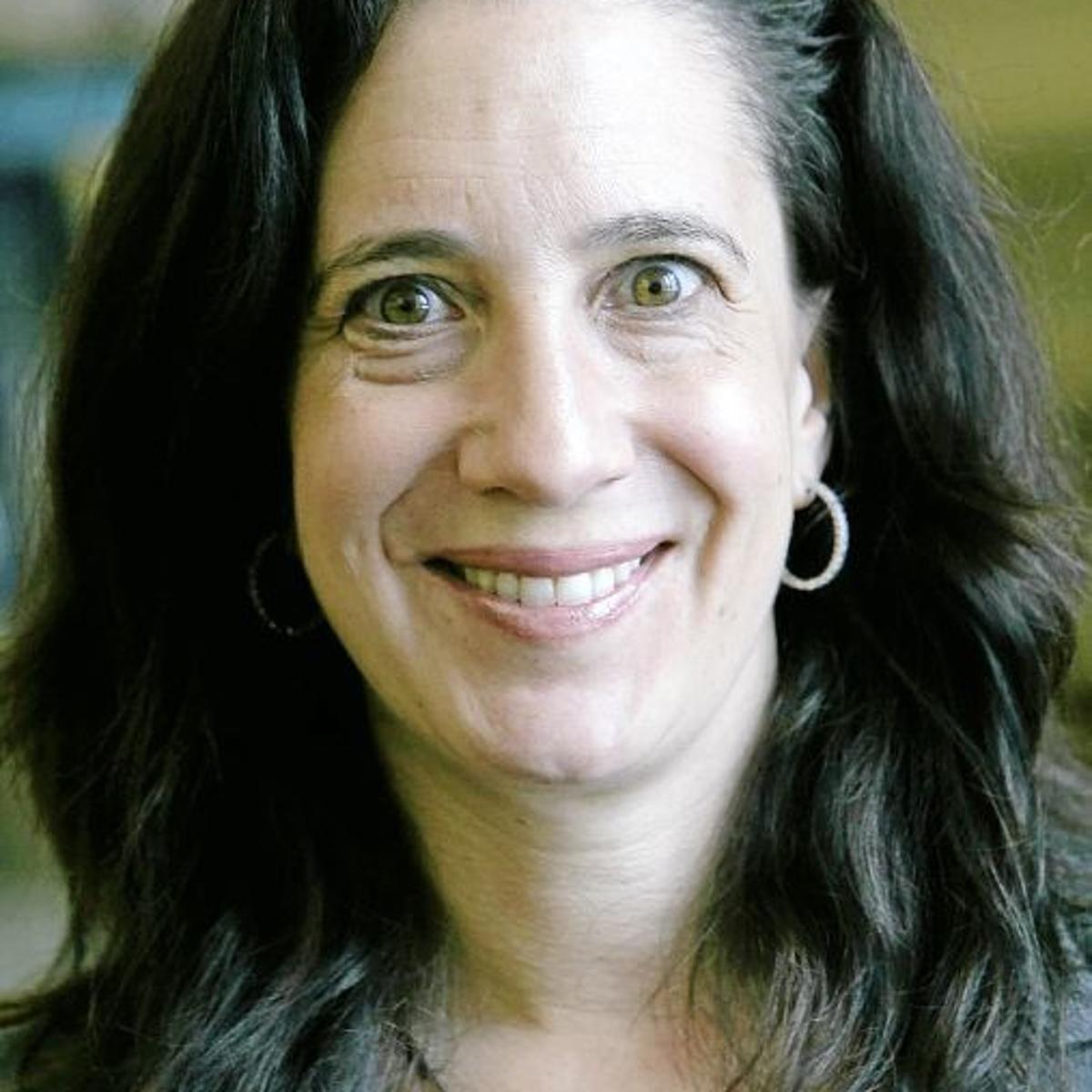
Janet Levin [Source: tulsaworld.com] 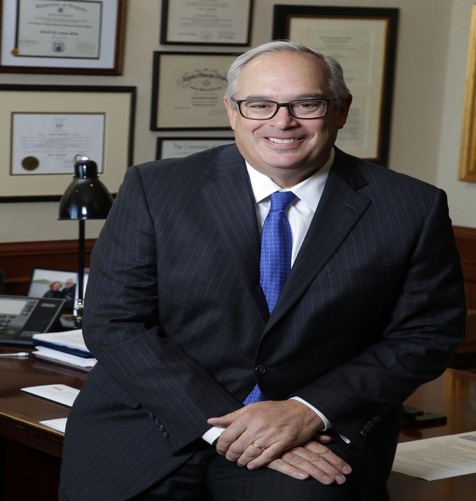
Gerard Clancy presided over the dismantling of TU’s humanities programs. [Source: tulsaworld.com]
The Ross Group: Linking TU to Black Wall Street’s Burning
TU’s major funders add to the school’s Pentagon connections. Warren and Teresa Ross, who head Tulsa’s Ross Group construction firm, started the Ross Mathematics Endowment Fund in 2012, and serve on various school boards and fundraising committees.

Their firm “carved its niche with federal contracts,” completing dozens of different projects for the Pentagon, worth nearly $900 million, since 2002. These include a $21 million “C-130J Fuel Maintenance Hangar” in Little Rock; a $16 million “KC-46A Fuselage Trainer Flight Training Center” at southwestern Oklahoma’s Altus Air Force Base; a $24 million DHS/ICE facility in El Paso; and a share, through its Walga Ross Group affiliate, of President Donald Trump’s $5 billion border wall project.
After profiting from its military work, the Ross Group set its sites on downtown Tulsa and its Greenwood District. White Tulsans burned down that historically Black neighborhood in 1921, and in the 1960s decimated it again—after Blacks had successfully rebuilt it—through “urban renewal.”
Today, “Black entrepreneurs say they are being … shut out of Greenwood’s most prestigious development projects.” In 2017, for example, a Black developer lost out “to a well-known local developer whose firm had not participated in the first round of bidding but had a deep downtown portfolio.” That firm was the Ross Group.
But the company has stumbled on its ascent, to be fair. Last June, the Justice Department “alleged that Ross Group [had] created two companies, PentaCon LLC and C3 LLC,” to secure “federal set-aside contracts reserved for disadvantaged small businesses.” This time, cutting corners cost the firm. It agreed to pay $2.8 million—a fraction of what it earned building for the DoD—to settle the case, and to avoid any admission of wrongdoing.
TU’s New President: Brad Carson
As if to signal its intention to deepen its military ties even more, TU recently appointed Brad Carson its new president. His term began July 1.

Carson is just the latest former U.S. military official to win a top university post. Admiral William McRaven, who oversaw the Joint Special Operations Command (JSOC)—a “manhunting machine” and team of assassins—became chancellor of the University of Texas system in 2015, for example. And in 2019, Richard Myers, a former four-star Air Force General, became Kansas State University’s president.
These appointments carry a high cost. They reinforce the cultish reverence of military figures in the U.S., suggesting their backgrounds prepare them for any leadership role—that these men are better prepared than, say, professors to lead universities. And they make it more likely that university research will serve military ends. As a result, higher learning will drift further from humanistic ideals, promote war over peace, and reinforce—not challenge—the status quo.
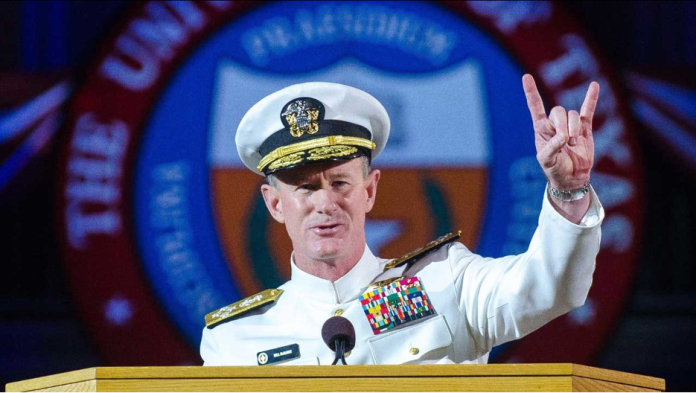
Carson is a known entity in Tulsa, particularly to Kaiser and his affiliates. He led Kaiser’s National Energy Policy Institute, for example, which pushed for the exploitation of domestic energy as a means of “reducing U.S. dependence on foreign oil.”
Carson also served as a congressman for Oklahoma’s 2nd District from 2001 to 2005, with Kaiser-Francis Oil funding his campaign.
During his time in office, he made one thing clear: He is a radical statist, ready to invoke “national security” to back Washington’s attacks on foreign countries; to support the U.S. government’s invasive, baseless surveillance of its own citizens; and to militarize the U.S.-Mexico border into a death zone.
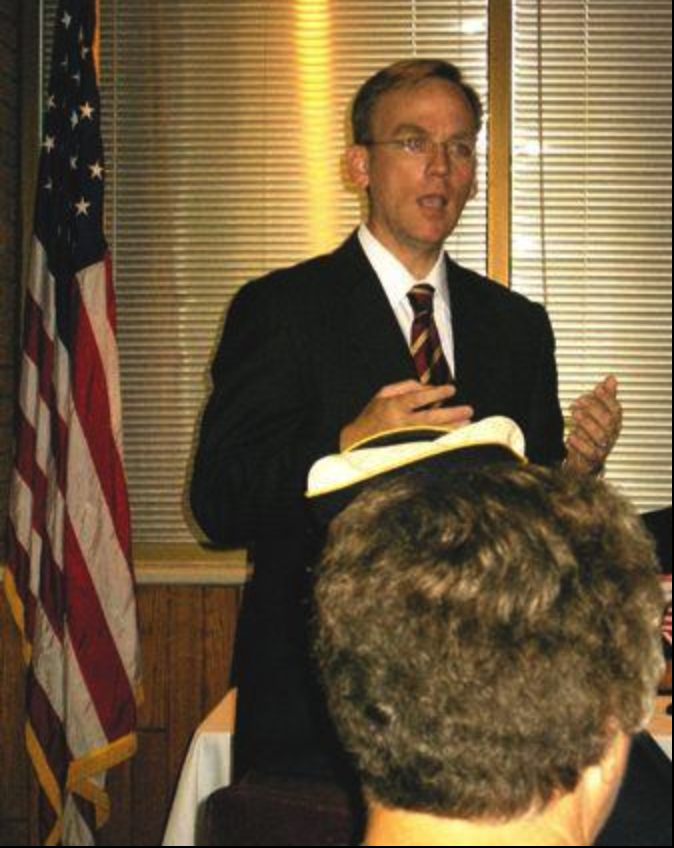
Carson voted for the 2001 USA PATRIOT Act, for example, which “made it easier for the government to spy on ordinary Americans,” and “turn[ed] regular citizens into suspects.”
He then voted for the 2002 Authorization for the Use of Military Force Against Iraq, enabling Washington’s invasion the following spring. Carson never regretted this decision, even after the assault’s official pretext (WMD) collapsed; ‘shock and awe’ killed thousands of civilians; and the occupation boosted global terrorism. All of this was, for Carson, “a great service,” both for “humanity and especially the Iraqi people.”
Back at home, he blasted “illegal immigration” across the U.S.-Mexico border and co-sponsored both the 2002 SAFER Act and the 2003 Clear Law Enforcement for Criminal Alien Removal Act.
These calls for more Border Patrol forces, for a more militarized migration policy, came as that very approach caused thousands of undocumented people to risk their lives—and to die, in thousands more cases—on the trek through southwestern Arizona, a result of President Bill Clinton’s 1994 “Prevention Through Deterrence” policy.
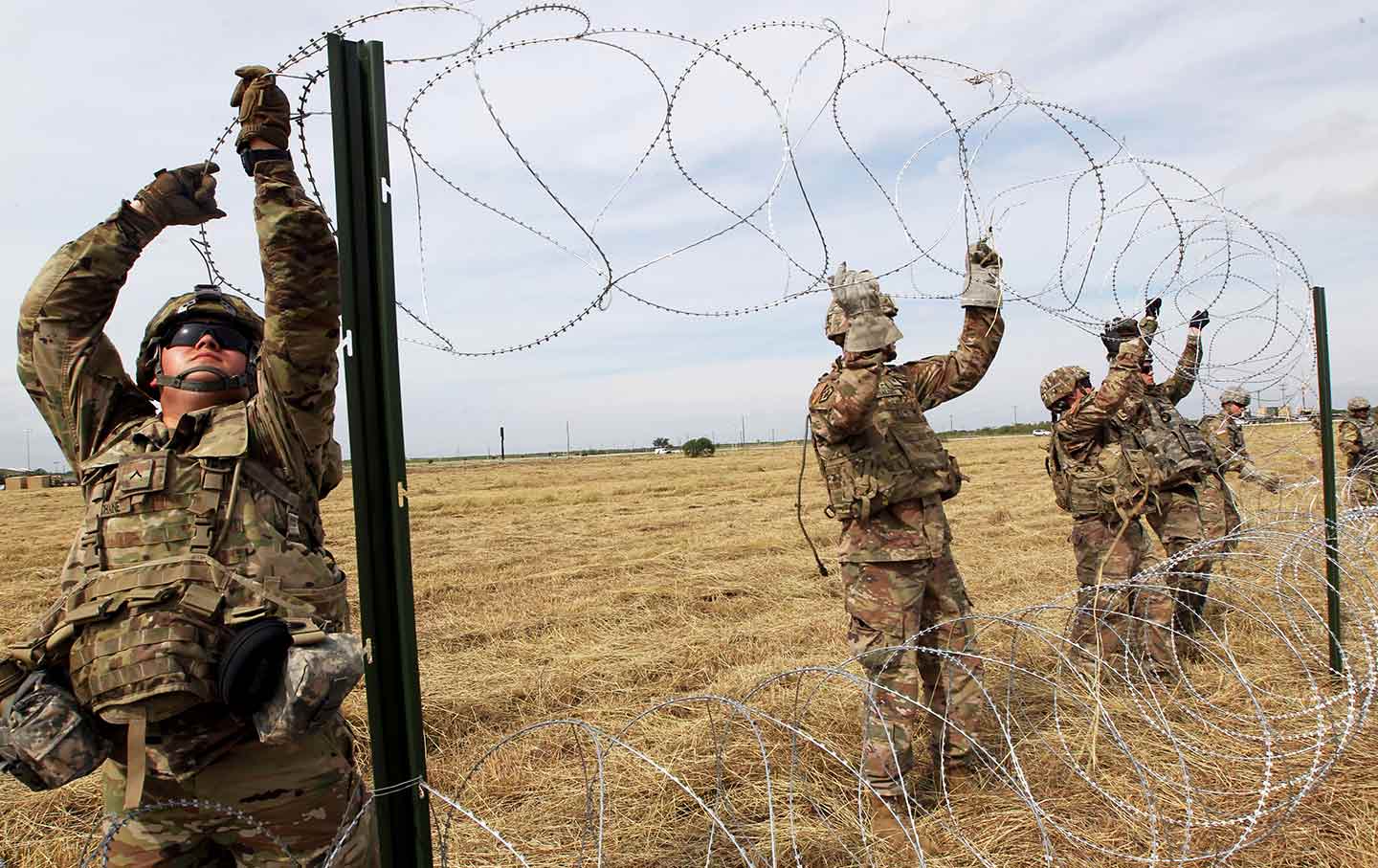
In 2008, Carson deployed to Iraq. While there, he was Officer-in-Charge of the U.S. Army’s 84th Explosive Ordnance Disposal Battalion, defusing improvised bombs Iraqis built to try to drive the occupiers from their country.
President Barack Obama then tapped him for a trio of top military positions: General Counsel of the U.S. Army in 2011; Under Secretary of the U.S. Army in 2013, which Carson used to advocate for a global military presence and a $120 billion modernization scheme; and the DoD’s Under Secretary of Defense for Personnel and Readiness in 2015.

In that last position, Carson was the subject of a critical piece by investigative reporter Barbara Koeppel. Writing in The Washington Spectator in May 2015, she accused him of continuing a long-term DoD cover-up: refusing to admit that Gulf War veterans had inhaled sarin gas when they blew up Saddam Hussein’s chemical weapons bunkers in 1991.
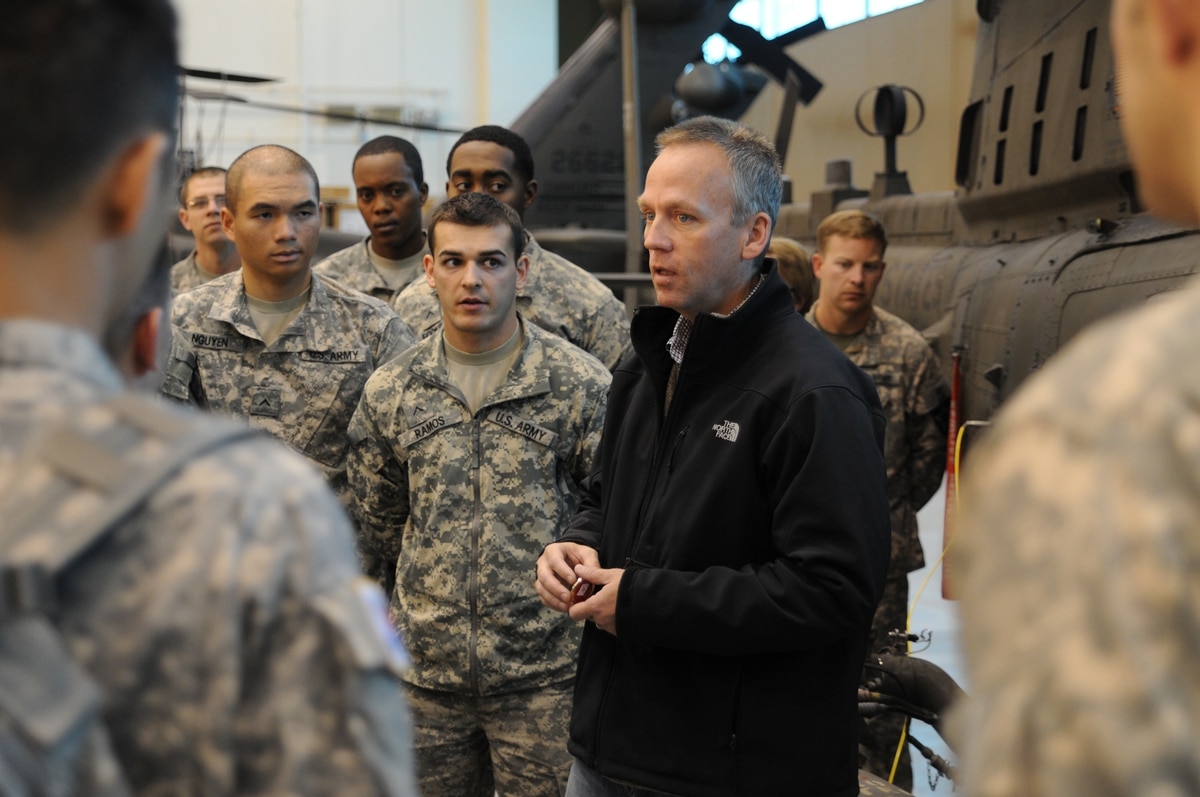
Carson later landed at the University of Virginia, where he taught at the Batten School of Public Policy and hosted a popular podcast, “Jaw-Jaw,” on China’s rise.
Though some of Carson’s guests, like military strategist Edward Luttwak, eagerly forecast China’s downfall, listeners might be struck—at times—by Carson’s comparatively optimistic view of U.S.-China relations. He wonders, for example, whether Beijing is “merely being a deeply illiberal society. Doesn’t seem to necessarily and logically mean do they have to be that level of a threat to us.”
But his ultimate stance, in keeping with his congressional record and years of top-level military work, is bellicose. On one episode, he tells his guest, political scientist Minxin Pei, that Washington has two options: “One is to try to keep China from becoming as powerful as the arc it seems to be on will lead it to. The second is to try to undermine the legitimacy of the Chinese Communist Party in some way.”
“Yeah,” Pei agrees, perhaps recalling the whirlwind Washington reaped in Iraq: “Regime change is really difficult.” But not wrong or immoral.
The Militarization of Higher Education
TU’s military ties are alarming, in the end, not for their singularity, but because they reflect a broader trend countrywide.
“Some of the nation’s most elite universities are deep into defense lobbying,” Politico reported in 2014, naming Princeton, NYU, Johns Hopkins, the University of Michigan, and several other top schools in its report. Henry Giroux, discussing the post-9/11 militarization of higher education, references the extensive work schools like MIT, Penn State and others have done for the Departments of Defense and Homeland Security. And a 2002 report by the Association of American Universities found that “almost 350 colleges and universities conduct Pentagon-funded research.”
As we try to grasp the full extent of these military-university links, it might seem naïve, or hopeless, to recall another view of education—the Enlightenment view that “the propagation of knowledge” could tame “social and political evils,” for example. Or Bertrand Russell’s belief that education should “give a sense of the value of things other than domination”—like “individual creativeness”—and “help to create wise citizens of a free community.”
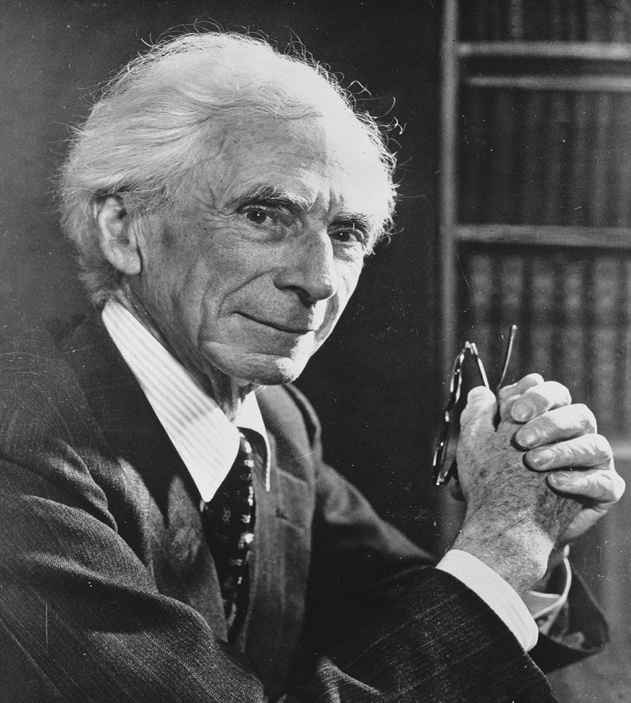
But we cannot forget or abandon these ideals. The stakes are too high.

-
Guy William Lodgson, The University of Tulsa (Norman: University of Oklahoma Press, 1977), 27. ↑
-
Ibid., 215, 246-7. ↑
-
Ibid., 266-8. At least one professor, Davis Joyce, was known to have been fired for opposing the Vietnam War. He later wrote a biography of people’s historian Howard Zinn.
-
R. C. Lewontin, “The Cold War and the Transformation of the Academy,” in The Cold War & The University: Toward an Intellectual History of the Postwar Years, André Schiffrin, ed. (New York: New Press, 1997), 2, 4. ↑
-
Noam Chomsky, “The Cold War and the University,” in The Cold War & The University: Toward an Intellectual History of the Postwar Years, André Schiffrin, ed. (New York: New Press, 1997), 182. ↑
-
Lewontin, “The Cold War and the Transformation of the Academy,” 2. ↑
-
The Center for Biological Diversity meanwhile reported that fracking releases large amounts of methane, a dangerously potent greenhouse gas. Fracked shale gas wells may have methane leakage rates as high as 7.9 percent, marking it as worse for the climate than coal. ↑
-
Clancy had previously led the transformation of medical education at OU-Tulsa in 2008, thanks to a $50 million grant from the George Kaiser Family Foundation. ↑
CovertAction Magazine is made possible by subscriptions, orders and donations from readers like you.
Blow the Whistle on U.S. Imperialism
Click the whistle and donate
When you donate to CovertAction Magazine, you are supporting investigative journalism. Your contributions go directly to supporting the development, production, editing, and dissemination of the Magazine.
CovertAction Magazine does not receive corporate or government sponsorship. Yet, we hold a steadfast commitment to providing compensation for writers, editorial and technical support. Your support helps facilitate this compensation as well as increase the caliber of this work.
Please make a donation by clicking on the donate logo above and enter the amount and your credit or debit card information.
CovertAction Institute, Inc. (CAI) is a 501(c)(3) non-profit organization and your gift is tax-deductible for federal income purposes. CAI’s tax-exempt ID number is 87-2461683.
We sincerely thank you for your support.
Disclaimer: The contents of this article are the sole responsibility of the author(s). CovertAction Institute, Inc. (CAI), including its Board of Directors (BD), Editorial Board (EB), Advisory Board (AB), staff, volunteers and its projects (including CovertAction Magazine) are not responsible for any inaccurate or incorrect statement in this article. This article also does not necessarily represent the views the BD, the EB, the AB, staff, volunteers, or any members of its projects.
Differing viewpoints: CAM publishes articles with differing viewpoints in an effort to nurture vibrant debate and thoughtful critical analysis. Feel free to comment on the articles in the comment section and/or send your letters to the Editors, which we will publish in the Letters column.
Copyrighted Material: This web site may contain copyrighted material the use of which has not always been specifically authorized by the copyright owner. As a not-for-profit charitable organization incorporated in the State of New York, we are making such material available in an effort to advance the understanding of humanity’s problems and hopefully to help find solutions for those problems. We believe this constitutes a ‘fair use’ of any such copyrighted material as provided for in section 107 of the US Copyright Law. You can read more about ‘fair use’ and US Copyright Law at the Legal Information Institute of Cornell Law School.
Republishing: CovertAction Magazine (CAM) grants permission to cross-post CAM articles on not-for-profit community internet sites as long as the source is acknowledged together with a hyperlink to the original CovertAction Magazine article. Also, kindly let us know at info@CovertActionMagazine.com. For publication of CAM articles in print or other forms including commercial internet sites, contact: info@CovertActionMagazine.com.
By using this site, you agree to these terms above.
About the Author

Nick Alexandrov is a teacher in Tulsa, Oklahoma.
He writes mostly for Counterpunch Magazine with a focus on U.S. foreign policy.
His articles have also appeared in Asia Times, Cubadebate, History News Network, The News International (Pakistan), Pakistan Today, Rebelión, The Root, Truthout, Tulsa World, and other publications.
Alexandrov’s work has been cited in Salon and by Project Censored, and in reports published by the Center for American Progress and the London School of Economics. His articles are included in college course syllabi and have been translated into several different languages.
He can be reached at: nicholas.alexandrov@gmail.com.

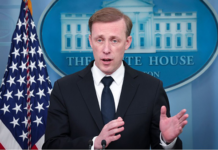




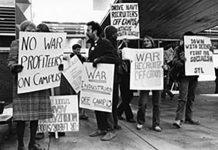

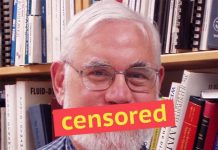

Some tidbits of information about Brad Carson. His family has its roots in the Cherokee Nation for which he is an enrolled member. His father worked for the Bureau of Indian Affairs. During Carson’s childhood the family relocated a number of times, resulting in Carson being raised in several different Native American communities, including reservations in Nevada, Arizona, and Kansas, as well as the Eastern Band Cherokee Reserve in North Carolina. Served as the Acting Under Secretary of Defense for Personnel and Readiness from 2015–16. In that role, he initiated a number of notable reforms to include opening up all combat positions to women, open service by transgender service members, and new recruiting and retention practices.
How do the students rate Tulsa University? Of 666 reviews 158 students rate the school as Excellent. 263 students rates the school as Very Good, 203 students rated the school as Average. 27 students rated the school as poor and 15 students rated the school as terrible. The overall rating was 3.8 out of 5.
Thanks, Briana. Did you find any info on how Chowkar-Karez residents rated the 2001 U.S. bombing campaign? How Palestinians rate Team8? How “rendered” detainees rated George Tenet’s tenure? I’d curious to see side-by-side comparisons of the data.